Most babies wriggle themselves into the optimum position forbirth, with their head down, facing your back. But when you feel those early twinges of labour, there are practical steps you can take that will help him do this, says Pilates instructor Nikki Chrysostomou.
These stretches will also calm and relax you, especially if, as you do them, you visualise your baby making his way into the world and play your favourite music. The right position can also help prevent things like shoulder dystocia.
Focus on your breathing: take a slow, deep breath in, which feels like a yawn, then breathe out with your mouth wide open. This is called the ‘ocean breathing technique’ and you’ll know you’re doing it right if your breathing sounds like waves swooshing in and out.
The first four exercises are particularly good during the early stages of labour, and the last three will help your body when contractions strengthen. It’s safe to practise them all as often as you can during pregnancy.
The Butterfly Stretch
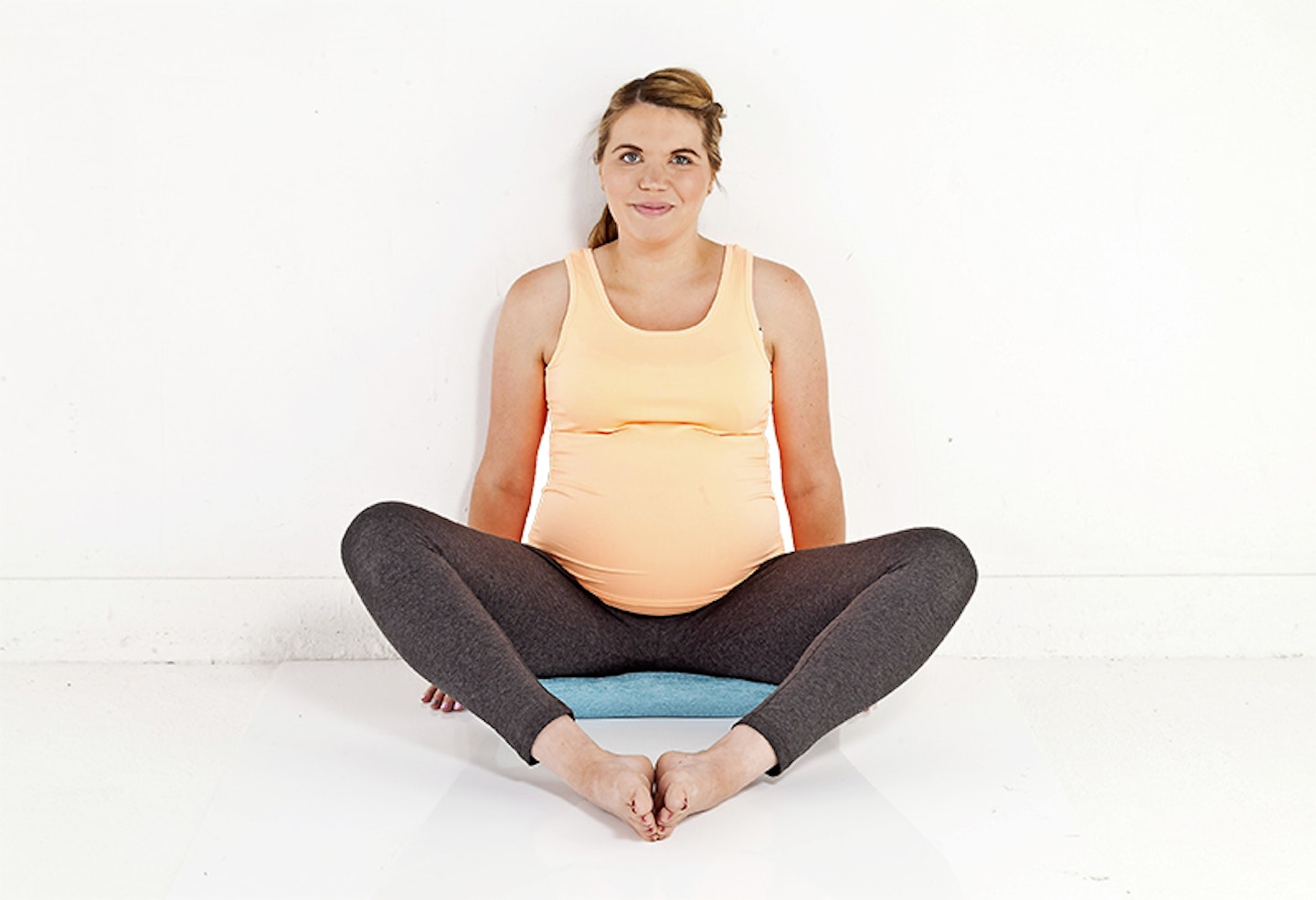
Your thighs will take a lot of your weight as you move into different positions throughout your labour, and this exercise will help your hard-working inner-thigh muscles relax.
Sit on a cushion with your back against the wall, bend your knees and place the soles of your feet together. As you exhale, let your thighs relax downwards as far as they will comfortably go.
The Deeply Relaxing Dip
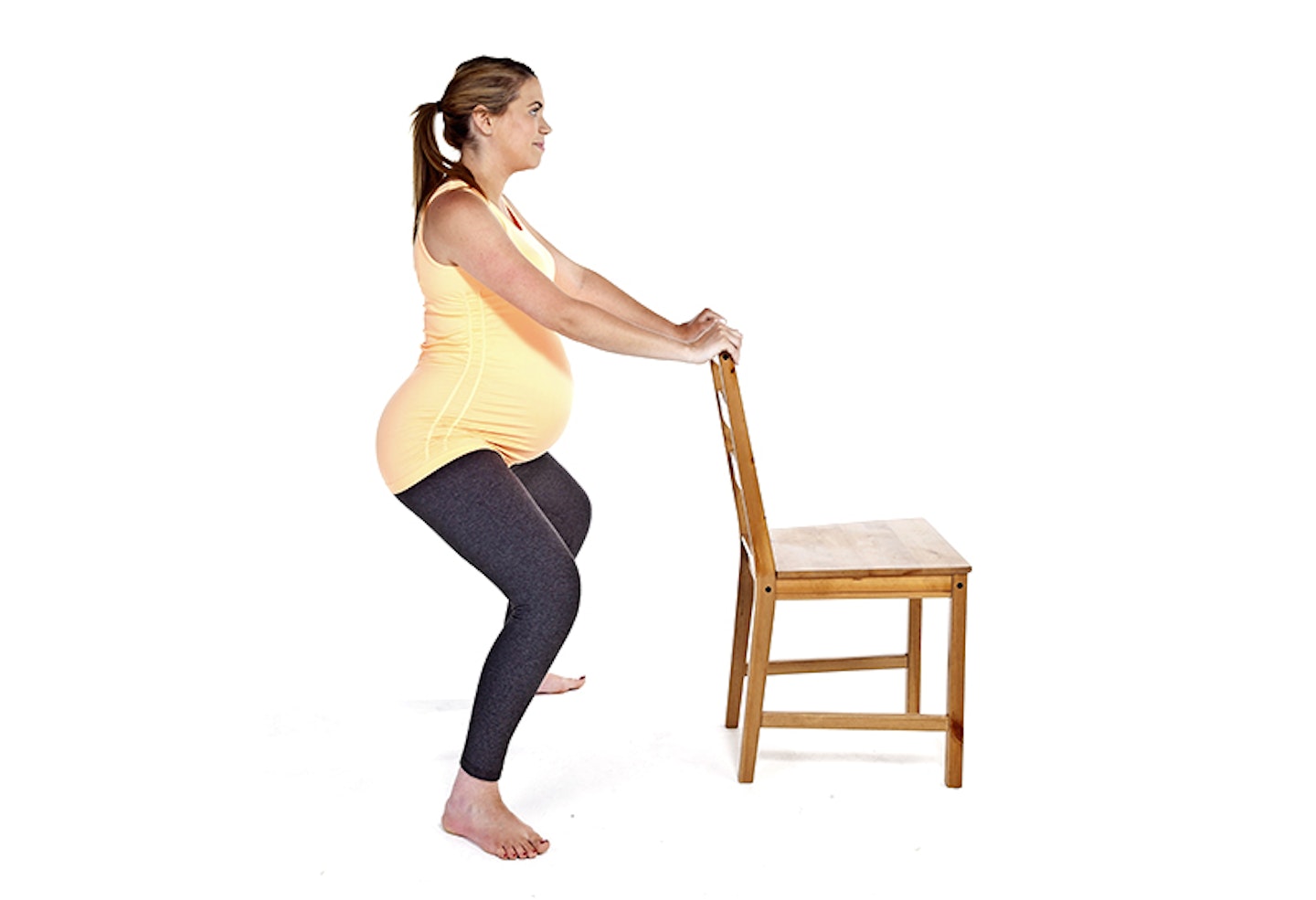
For labour to progress, your baby’s head needs to move down into the right position.
Squatting can help with this, allowing gravity to work with your body to help yourbaby’s head to engage.
Stand behind a chair, holding on to its back, with your legs slightly wider than hip-width apart, and your feet turned out a little.
Bend your knees, allowing your hips to flex, and your pelvis and bum to stick out, like you are about to sit down in a chair. You should feel your pelvis widen as you bend your knees.
You can also practice this position on a birthing ball.
The Pressure-Easing Lunge

This will help widen your pelvis and turn your baby so he is facing your back.
Place a chair against the wall, making sure it is stable. Stand by the side of the chair and place your left hand on the wall for stability.
Put your left foot on the seat and point your knee and foot towards the wall. As you lunge forward, bend your knee to make a 90° angle and move diagonally towards the wall.
Hold the lunge for a few seconds, then repeat on the other side.
The Gentle Circle
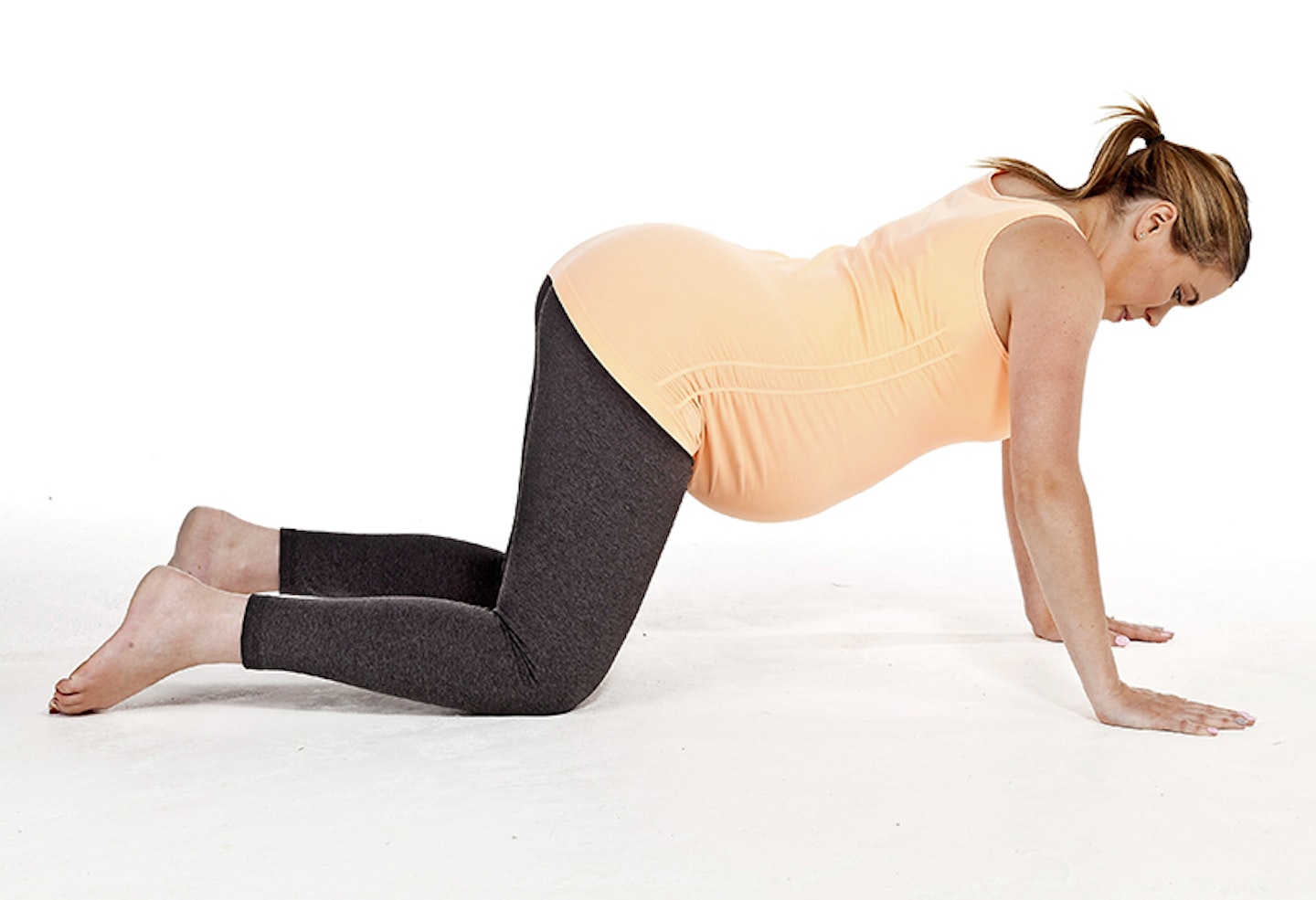
If you feel your baby is pressing against your spine, this will ease the pressure.
Carefully get on your hands and knees, keep your knees wide apart, and your hands just wider than your shoulders. Your back should be flat.
Slowly shift your weight in a clockwise circle by leaning over your right arm, then over your right hip, then your left hip, before moving forwards over your left arm.
Then circle your body anticlockwise, keeping your movements smooth.
The Back Soother
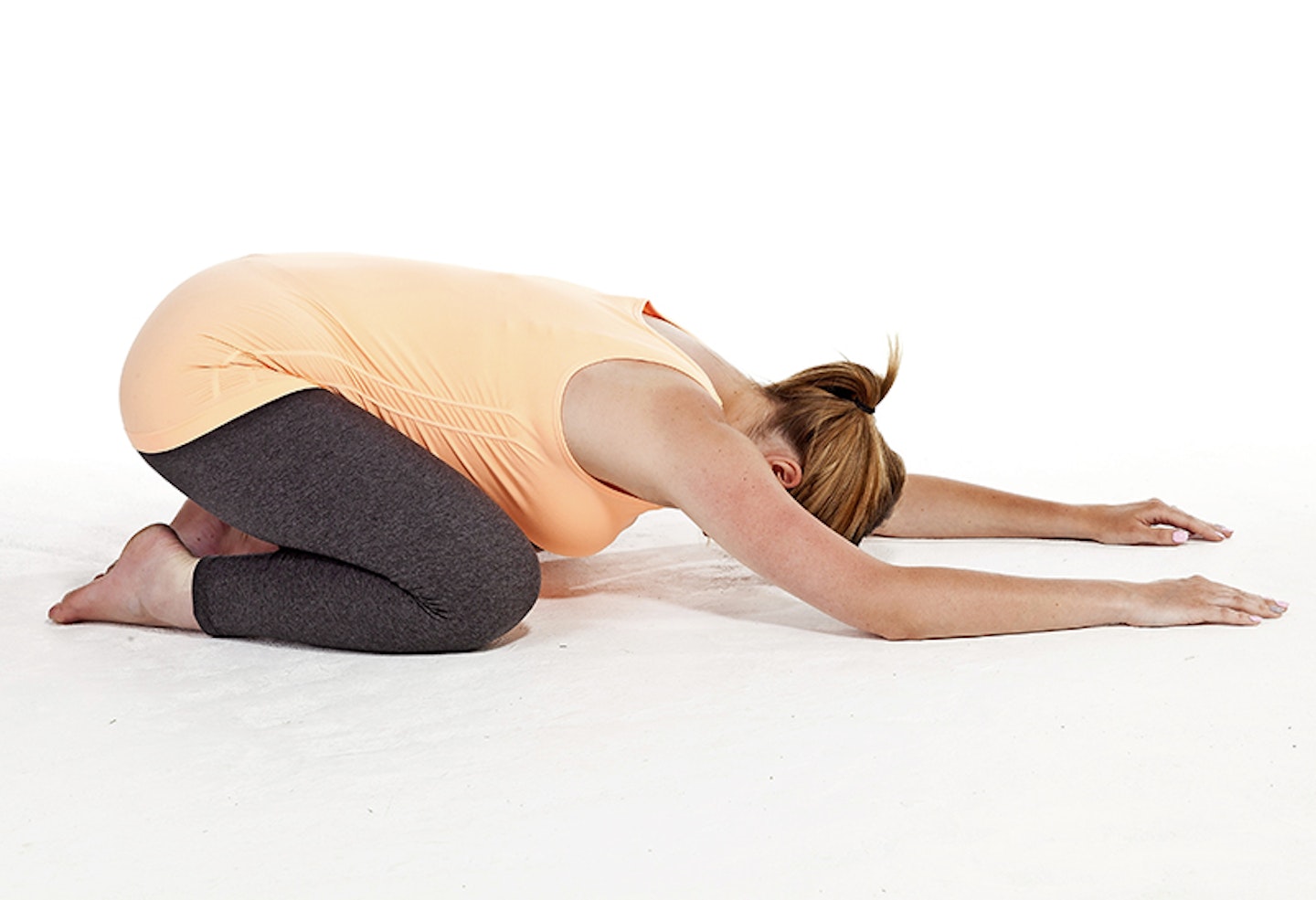
The weight of your bump puts a lot of strain on your back as your labour progresses, so take some time to stretch out your spine and back muscles.
Kneel on the floor and widen your knees, then lower your bum over your feet and reach forward, so your arms are stretched out in front of you and your hands are flat on the floor.
The Tension Reliever
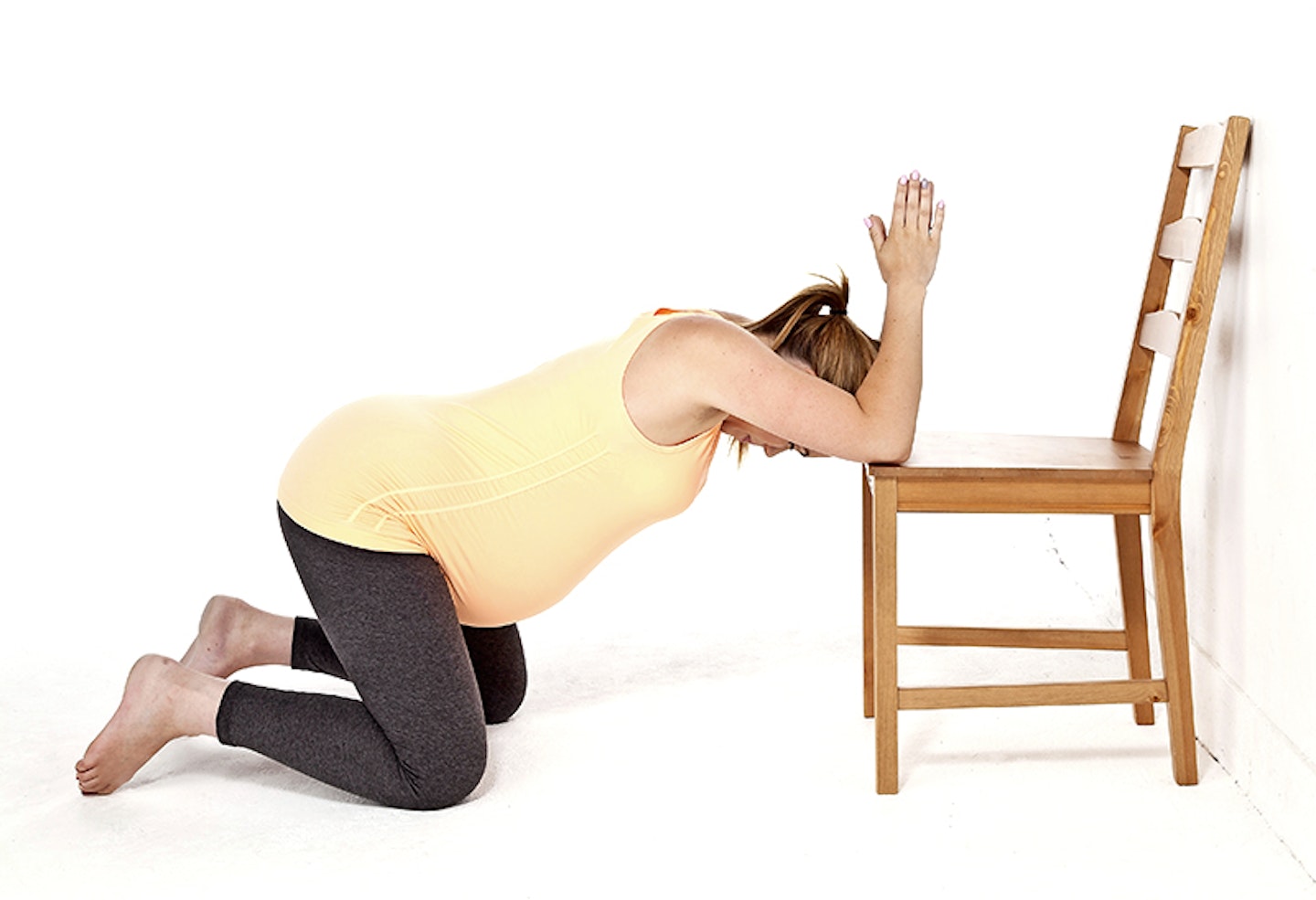
If you’re feeling that your contractions are getting a bit intense, this position can help give your body a little break.
Place a chair against the wall or use the side of the bed. Kneel on the floor and rest your elbows on the chair, shoulder-width apart.
Press the palms of your hands together, then point your fingertips up to the ceiling and relax your neck. Rest your forehead on the edge of the chair, placing a towel or cushion under your forehead, if you need it.
Keep your back straight, then tilt your pelvis and arch your back so the base of your spine points up and out. Take three slow breaths, then rest back on your heels and repeat when ready.
The Curl-Up
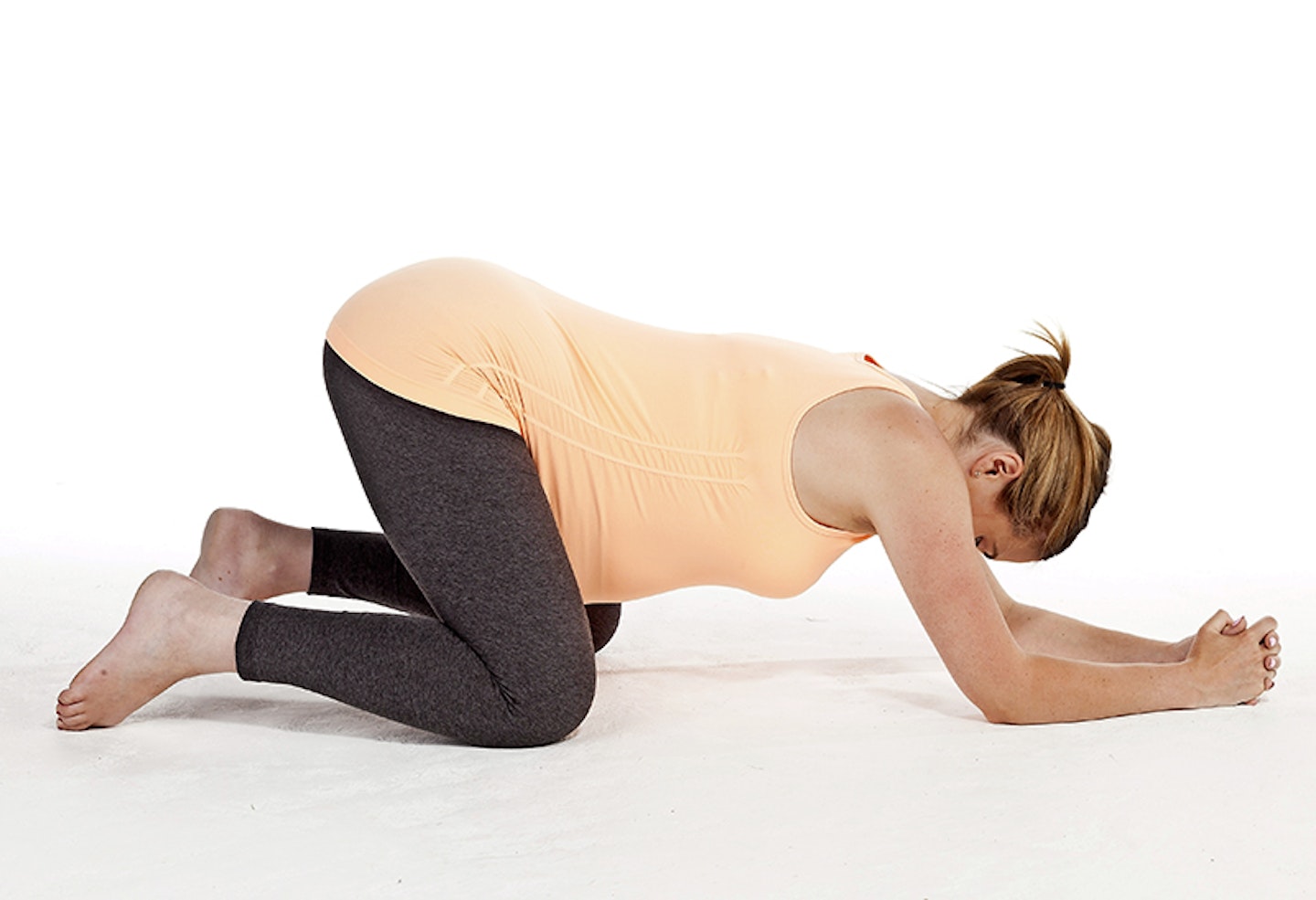
During the later stages of labour, this position can open up your pelvis to make that crucial little bit of extra room for your baby’s head to squeeze through.
Start on your hands and knees, then widen your knees and come down onto your elbows. Interlace your fingers.
Now slowly shift your body weight backwards, curling the base of your spine down towards the floor. Pause, then slowly move your body weight forwards onto your elbows again.
